Bon appétit Ishikawa!/Tori-gai
Nanao Bay’s Miraculous Delicacy: The Unparalleled Taste of “Noto Cockle (Tori-gai)” That Amazes Gourmets. 1[Bon appétit Ishikawa ! / Ishikawa Prefecture]
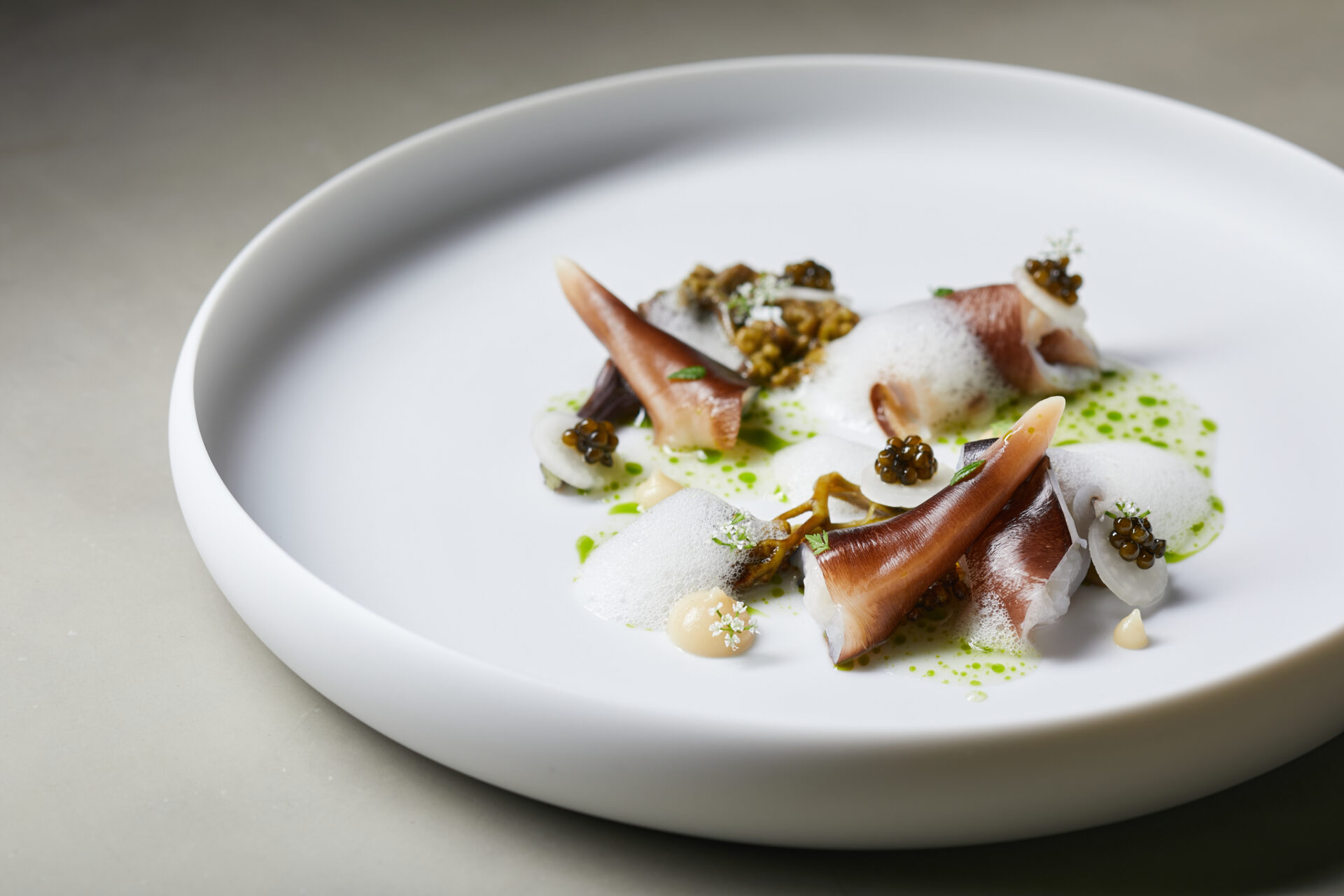
From Challenging Seedling Research to Fully-Fledged Aquaculture.
After leaving Ninzaki Fishing Port, Chef Tatsuro Ume, owner of “respiración,” headed to the Ishikawa Prefecture Fisheries Research Center. It is located near Ushitsu Port, one of the best ports on the Noto Peninsula. This center is a research facility aimed at promoting resource-managed fisheries in Ishikawa Prefecture. The journey of Noto Cockle (Tori-gai), produced through complete human aquaculture from egg to shipment, begins here with egg collection and seedling production.
Kinya Hamagami, Director of Planning and Extension at the Ishikawa Prefecture Fisheries Research Center, has been involved in the Noto Cockle aquaculture project since its inception. He recalls that research into seedling production of the cockle began in 1988, with the aim of maintaining and stabilizing the highly fluctuating natural cockle resources.
“The eggs of the cockle are only 65 microns in size (a micron is 1/1000 of a millimeter), and thus require highly advanced techniques for egg collection and artificial insemination. Cockles are very fragile, and even if fertilization succeeds, they mysteriously die during the planktonic larval stage of about two weeks, hindering the process. We were constantly exploring ways to help them survive, experimenting with slight adjustments in water temperature and different types of food. There were times when I stayed up through two consecutive nights to monitor them. In the first two years of the project, when I was just 24 years old, I approached everything with sheer determination. Eventually, we managed to cultivate juvenile cockles to over 1 cm, which led to several years of production. However, the project was unfortunately suspended due to technical difficulties and evaluations of its effectiveness.”
With the decline in natural cockle fisheries, a new project aimed at complete aquaculture was launched, covering stages from cultivation to shipment. Preliminary trials in 2009 yielded promising results, leading to the commencement of complete seedling production and aquaculture trials in 2010. Following training in aquaculture techniques for fishermen, full-scale shipments were finally achieved in 2015. Although the goal was to distribute 100,000 juvenile cockles to the fishermen and to achieve a market supply of 60,000, the supply remained around the 30,000 mark for several years. As research progressed, it became clear that environmental factors such as seawater temperature, hypoxia, and amount of feed had a significant impact, particularly highlighting the importance of avoiding high water temperatures in the summer. In response, a stable production support system was implemented in 2019, allowing fishers to monitor underwater conditions at any time via smartphone software. This led to a significant increase in delivery volumes.
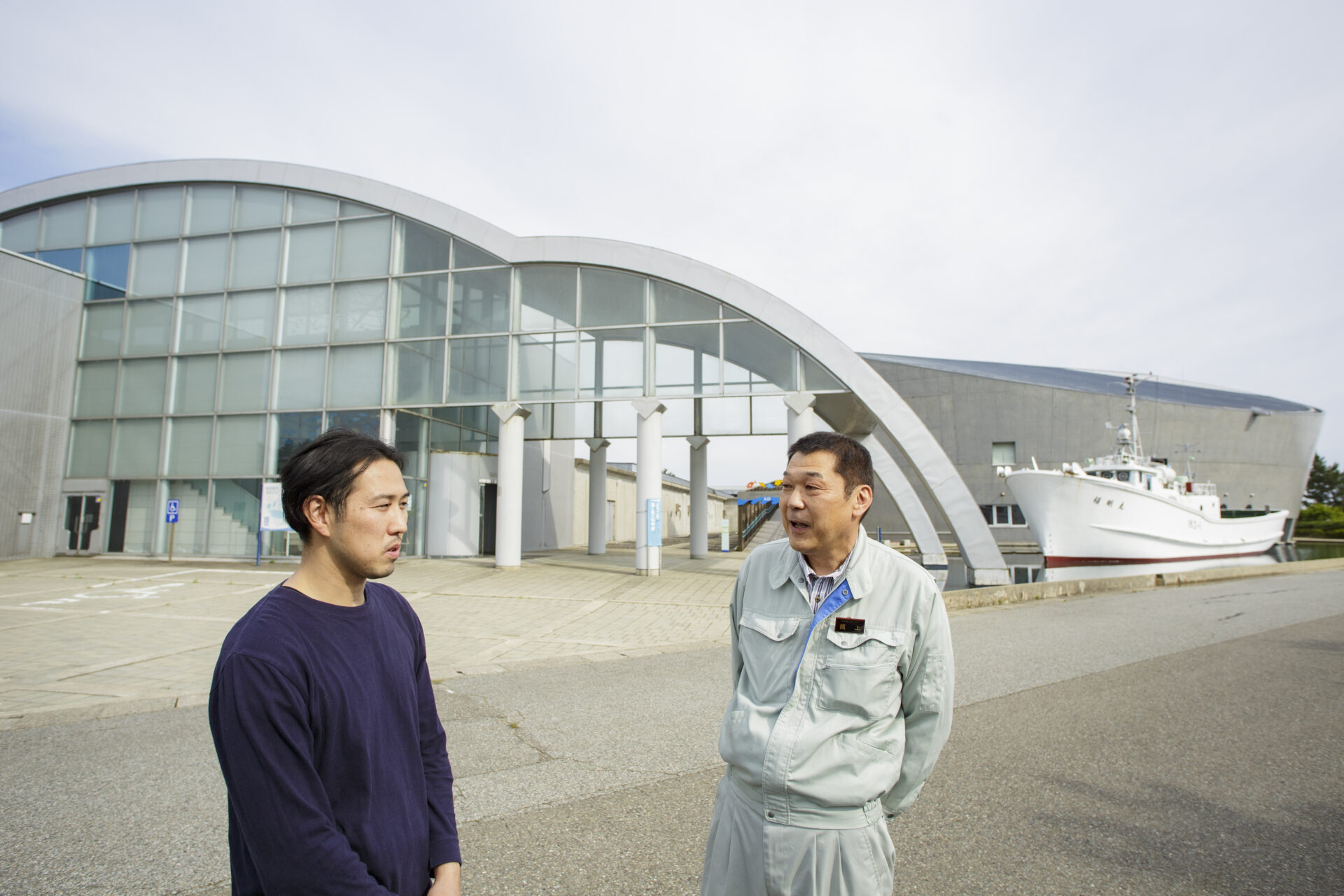
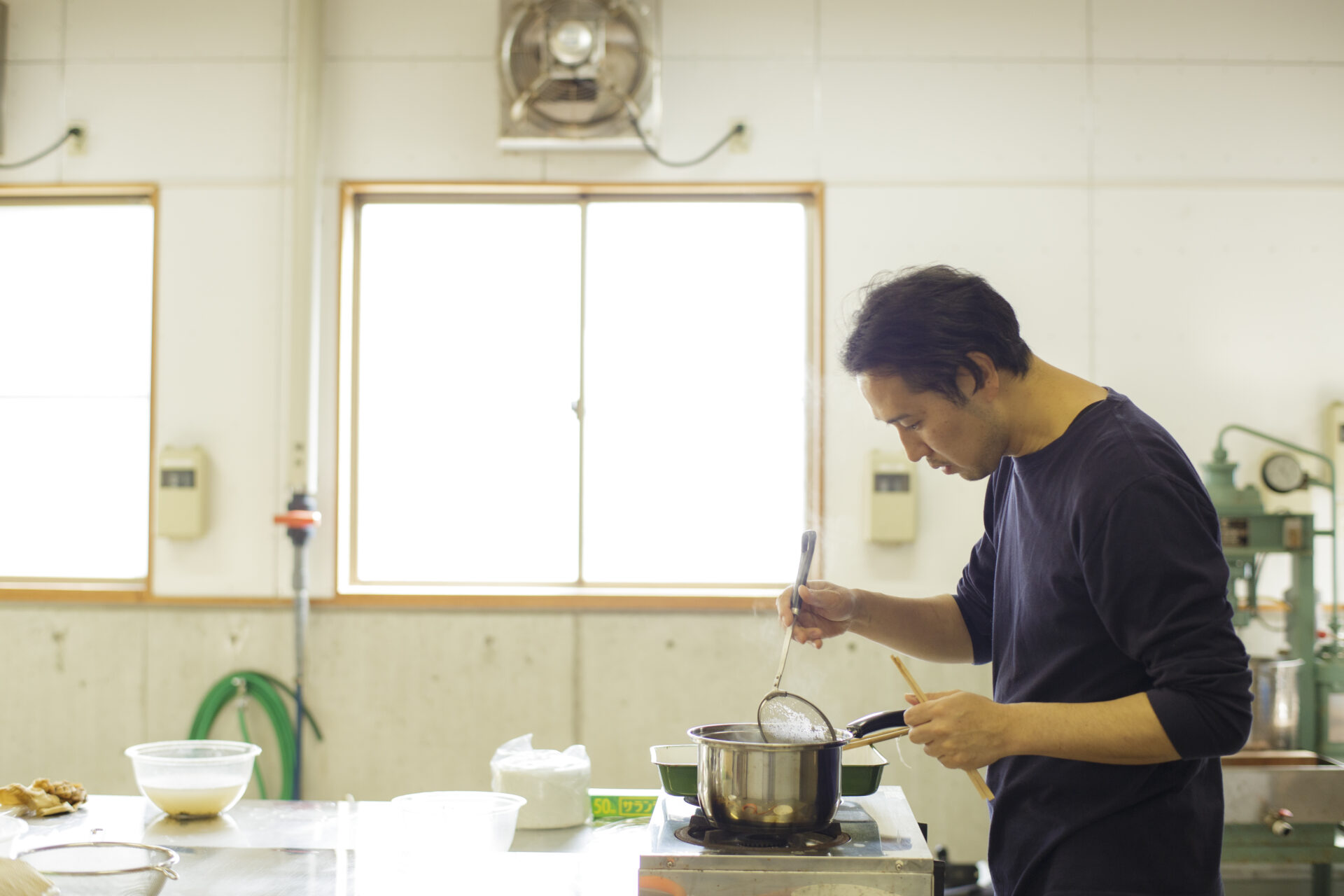
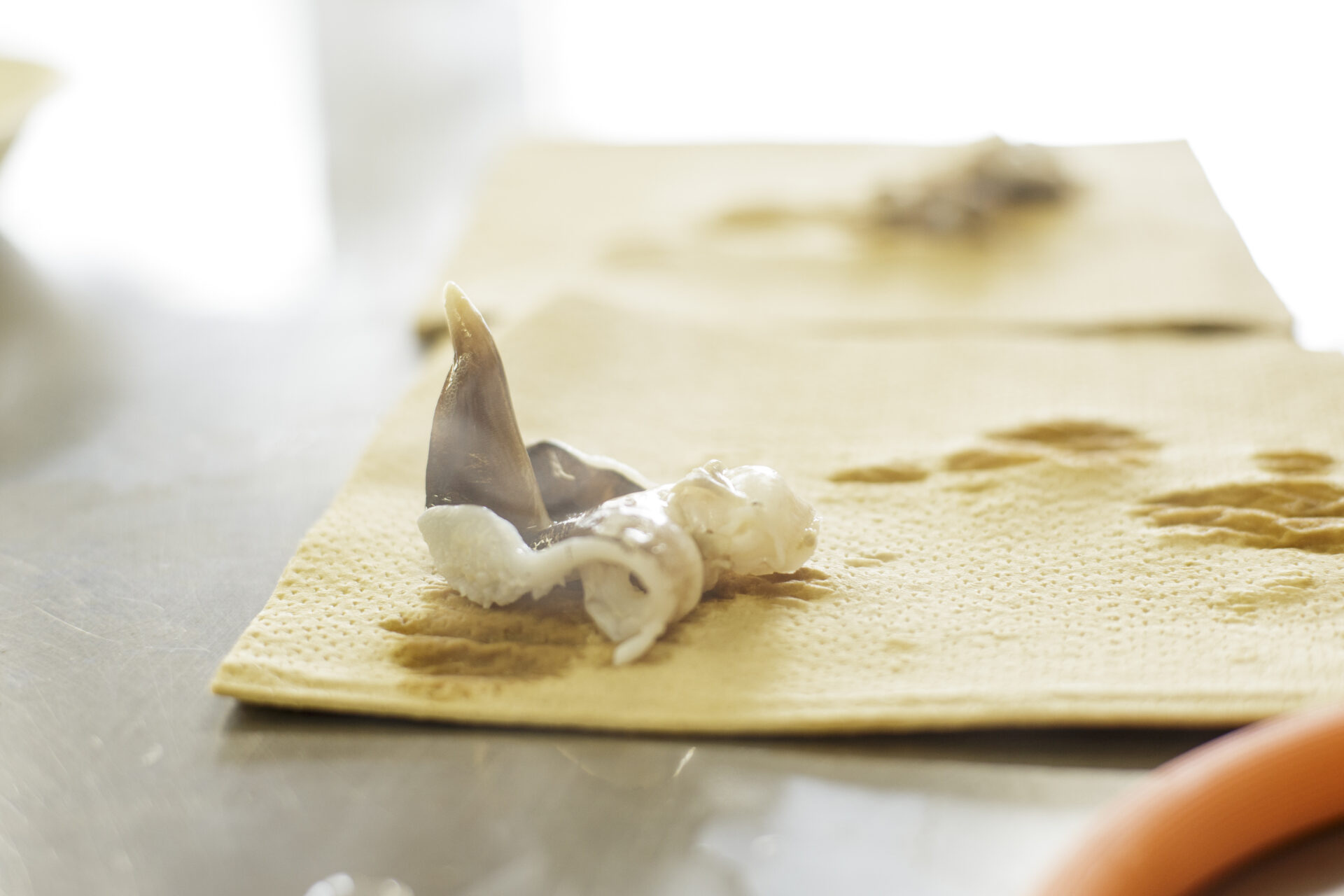
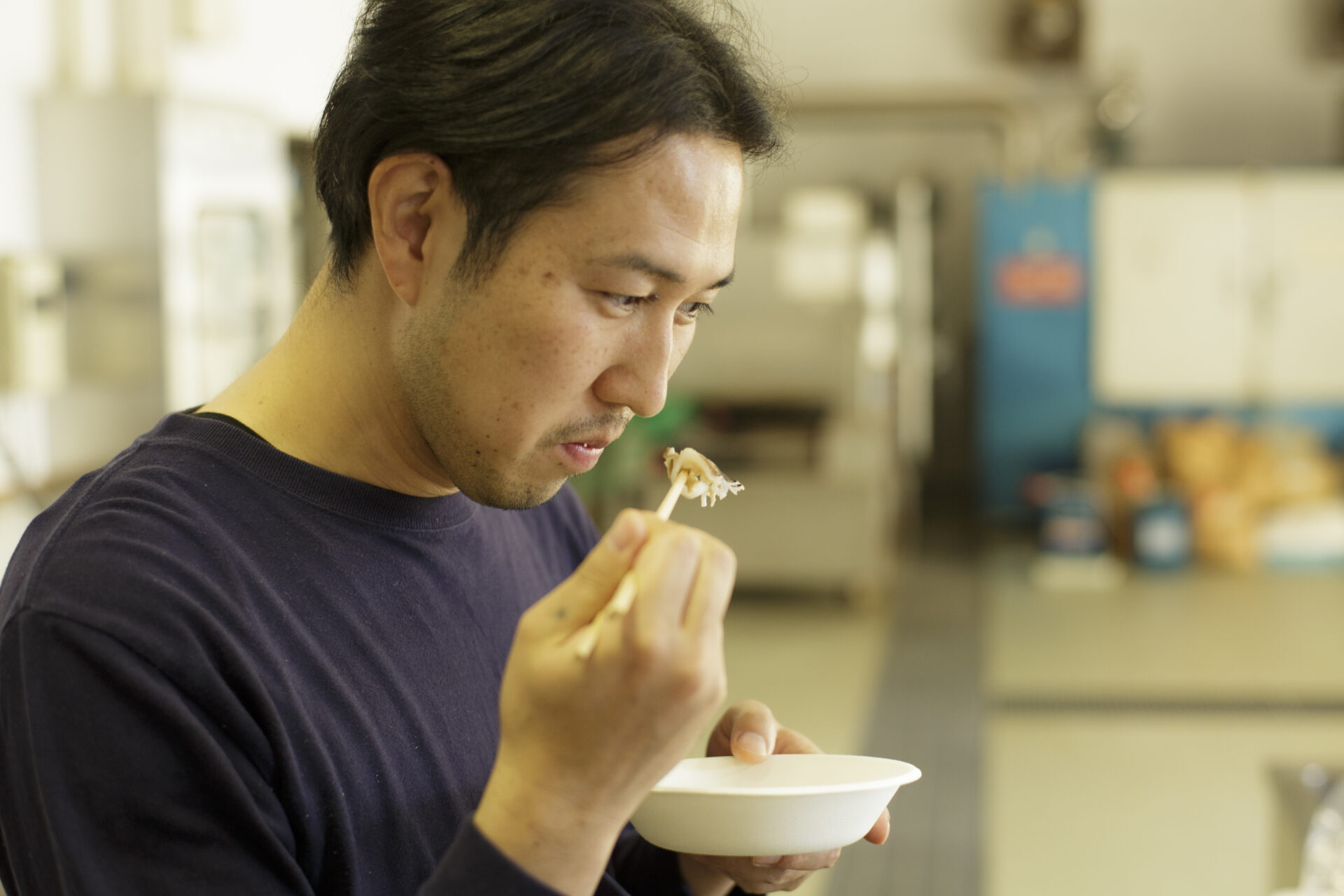
A Distinct Taste with Delightful Texture and Intense Sweetness.
Noto Cockle is shipped in five size categories based on weight: Premium, Extra Large, Large, Medium and Small. The largest, Premium, weighs over 200 grams with the shell and is considered a rarity, accounting for less than 1% of the total shipment volume. We had the opportunity to taste freshly harvested Noto Cockle at the Ishikawa Prefecture Fisheries Research Center.
Peeling the shell off a Premium-sized cockle himself, Mr. Ume is astonished not only by its size but also by its hefty weight.
“It's the same with oysters, but it's not the size of the shell that's important, it's how thick the meat is inside. Just by holding it, you can tell it's full of meat,” he observes.
Removing the innards and opening the cockle reveals a piece that could easily be twice the size of cockles from other regions that are typically seen as sushi toppings. The thickness is off the charts.
The tasting begins with a classic preparation: boiling. The cockle is boiled for one minute in a 1% salt solution and eaten piping hot. As Mr. Ume takes a generous bite, the pleasing sound of “gyu, gyu, gyu” echoes the satisfying crunch. While thoroughly savoring and evaluating the texture and flavor, Mr. Ume breaks into a smile and says, “It's delicious.”
“Just because it's large doesn't mean it lacks flavor. On the contrary, it has a strong sweetness. This is probably because, like the wild ones, it grows on natural phytoplankton. And because of its thickness, you can enjoy a pleasantly crunchy texture, as opposed to the typical soft texture of common cockles. There's a deliciousness that builds as you chew, with the sweetness intensifying the more you bite into it. This is very different from ordinary cockles,” he appraises.
Next, Mr. Ume tastes a piece that had been similarly boiled and then cooled, and seems to have an insight. He lowers the temperature of the water in the pot and gently simmers the Noto Cockle before quickly cooling it in the freezer. After waiting a few minutes, he takes a bite of the well-cooled, boiled Noto Cockle. Chewing carefully, he nods in approval. He even tries a raw piece, which is often considered to have a strong taste. “I like it raw too; the taste of the sea comes right through,” he smiles.
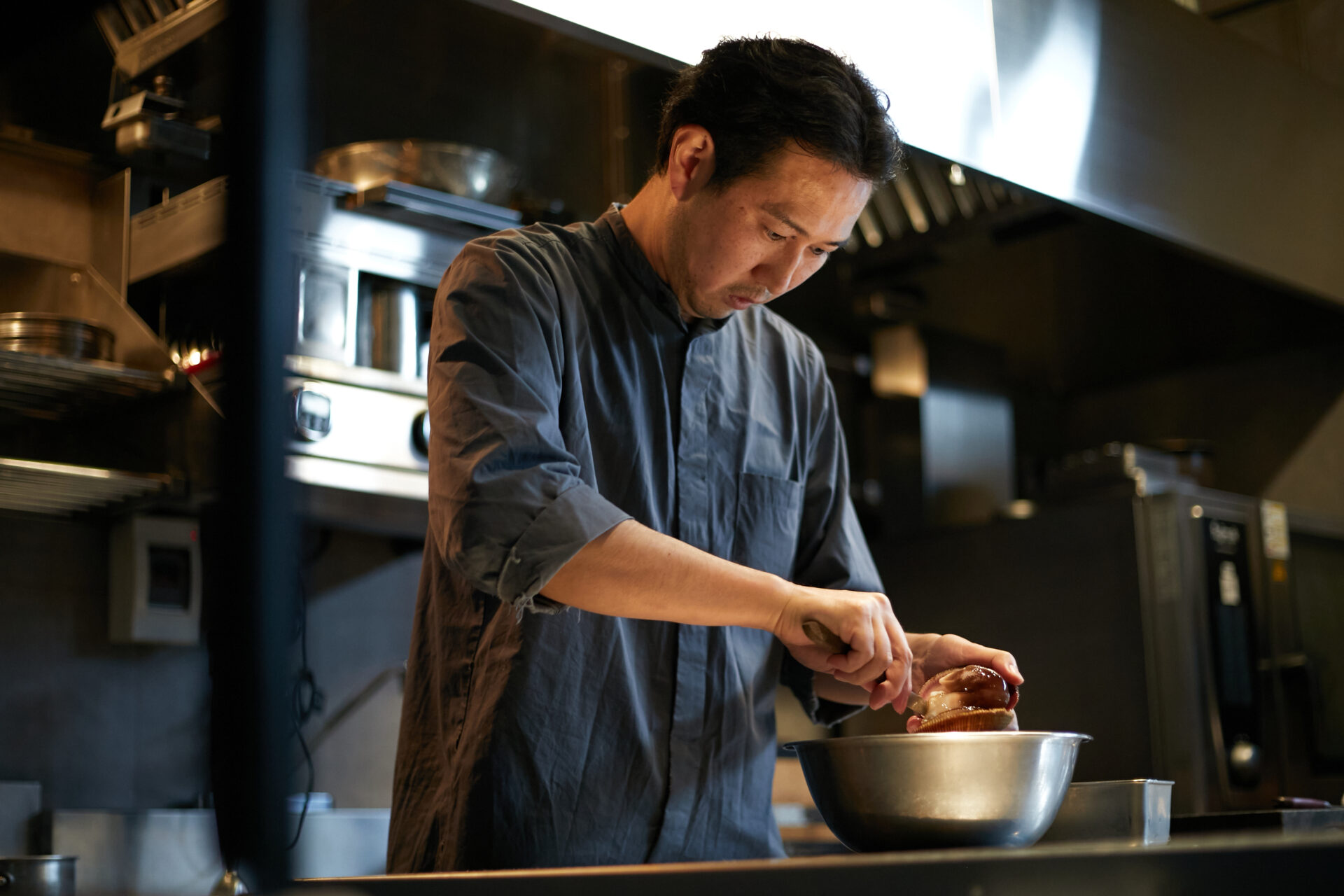
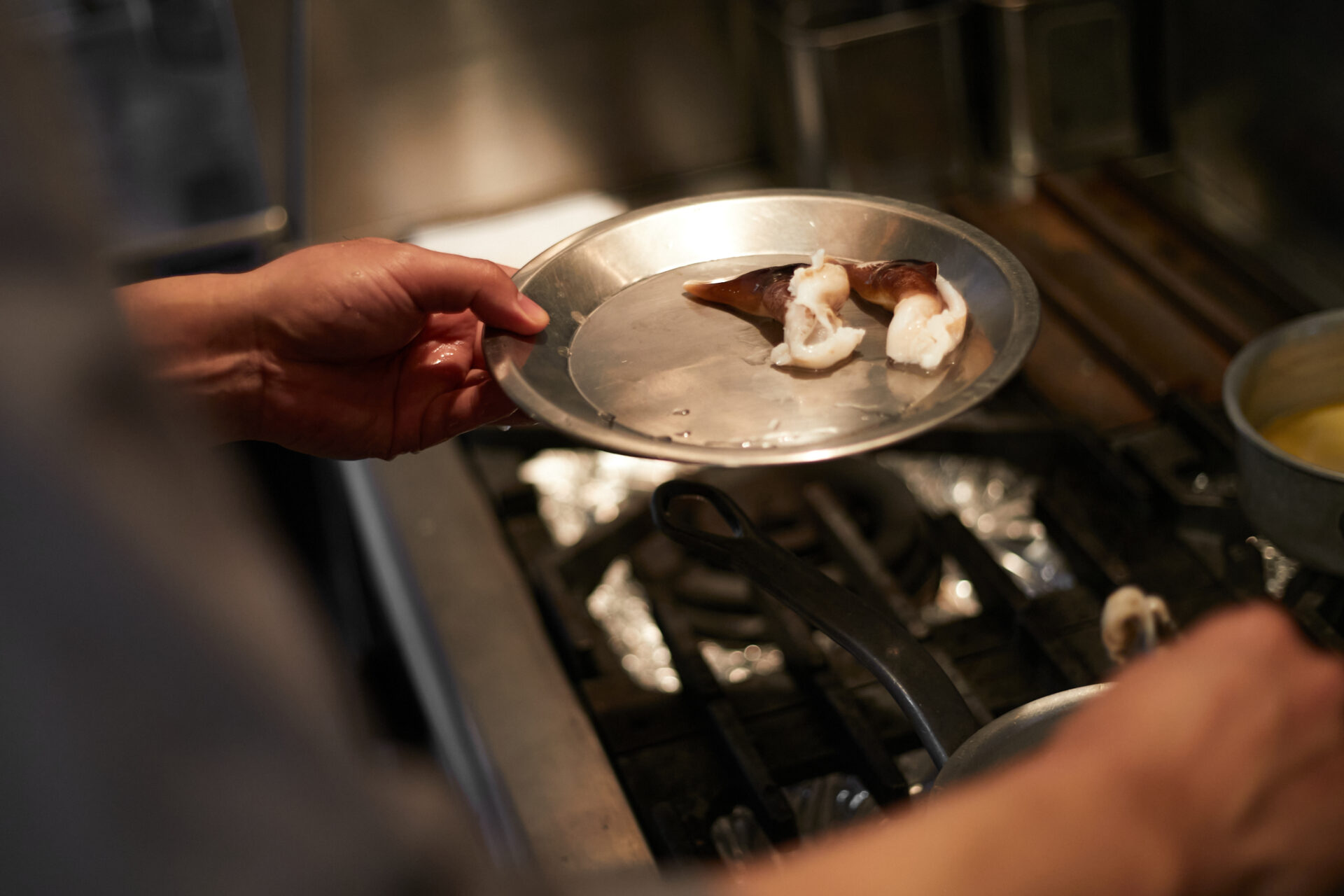
From Land to Sea: A Dish of Satoyama and Satoumi Delights
On another day, Mr. Ume prepares a dish with Noto Cockle.
“I don't usually create dishes that reflect the landscape, but this time, I made a conscious decision to do so,” he remarks. The dish contrasts starkly with the usual minimalist and stoic beauty of ‘respiración,’ evoking a joyful impression, as if the Noto Cockle were dancing freely. Accompanying the Noto Cockle on the plate are warabi (bracken) and yama udo (mountain asparagus), wild vegetables in season in Noto. In addition, oil of seri (Japanese parsley), which also grows naturally in Noto's Satoyama, is added to a Noto Cockle broth sauce, along with seasonal spring onion sauce and citrus foam as accompaniments.
“The Noto Satoyama is filled with forests of Sawtooth oak and Mongolian oak. The forest floor, covered with fallen leaves and acorns, nurtures a variety of plant and animal life. Nutrient-rich snowmelt seeps through the soil and flows into Nanao Bay, creating rich fishing grounds teeming with phytoplankton. By combining this with wild vegetables that are in season around Nanao Bay from spring to early summer, I've expressed the landscape of Satoyama and Satoumi, connecting the land with the sea,” explains Mr. Ume.
Let’s enjoy Noto Cockle with warabi, yama udo and sauce. The distinct mild bitterness and aroma of the wild vegetables, combined with the natural sweetness of the seasonal spring onion sauce, enhance the inherent umami of the Noto Cockle, making it more pronounced than when tasted alone. It's a harmonious interplay of unique flavors from both the sea and the mountains. In fact, it's as if the scenery seen from the Noto Cockle aquaculture rafts is vividly reimagined through taste.
What also surprises me is the freshness of the Noto Cockle. It's plump and chewy, with an elegant sweetness and an aroma that spreads delightfully.
“I blanch them in 70°C water for 10 seconds. This cooking method, developed to bring out the unique firmness and delicate flavor of the Noto Cockle, is particularly suitable for the premium size. For smaller ones, a few seconds may be enough. By cooking them myself, I've come to appreciate the allure of Noto Cockles. They have a charm that other shellfish simply don't possess.”
During his visit to the Noto Cockle production site, Mr. Ume expressed his renewed amazement at the high potential of the ingredients nurtured by Noto's Satoyama and Satoumi.
I have developed a stronger urge to learn more about Ishikawa's ingredients. Discovering and communicating the new attractions of excellent ingredients is an important task for a chef. It is my desire to convey this through my dishes.
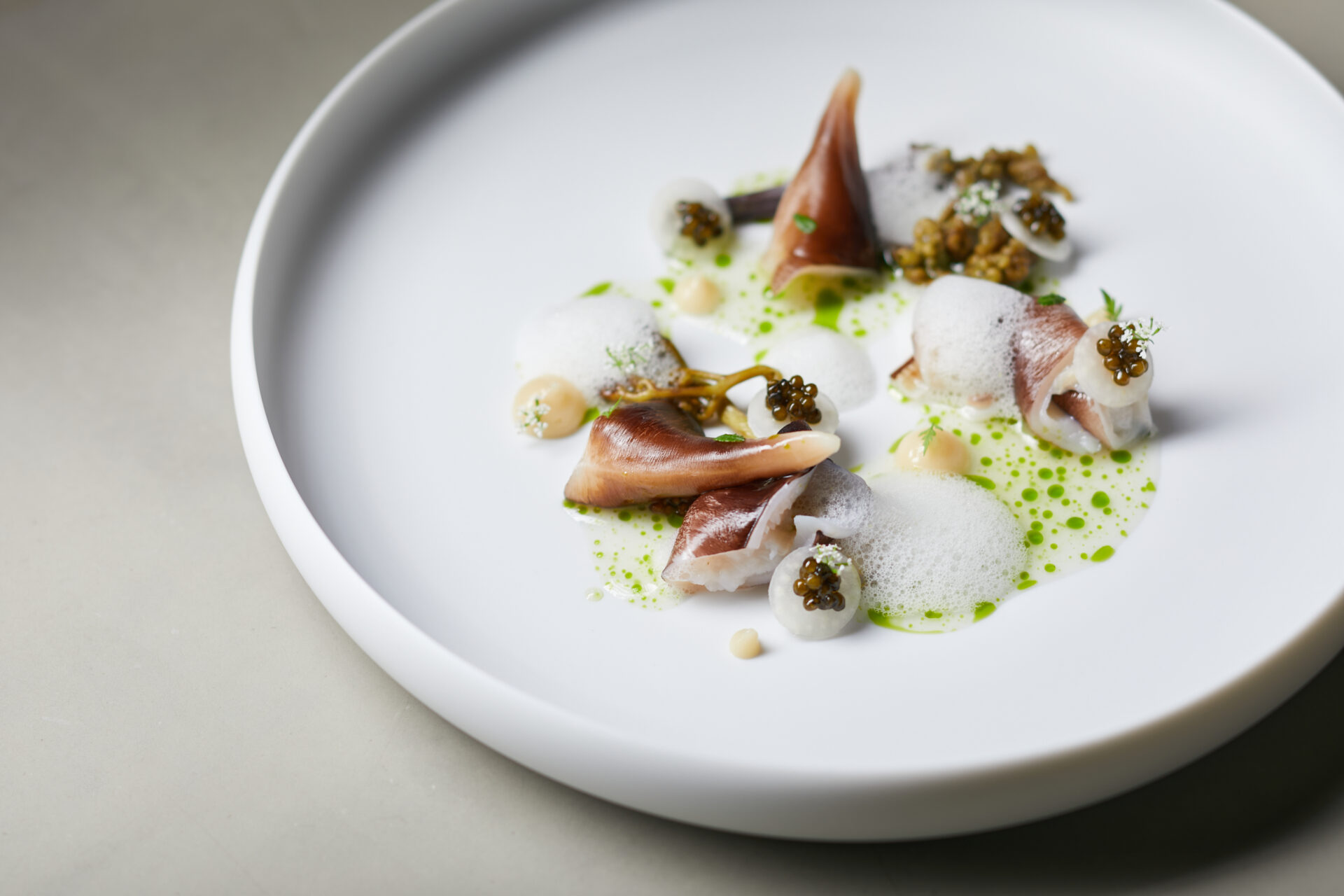

Profile
Tatsuro Ume | Chef-Owner of “respiración”
Born in 1980 in Ishikawa Prefecture, Mr. Ume began his culinary journey with a part-time job at a Japanese restaurant. He began his formal training at “Sumida” in Ryogoku, Tokyo. At the age of 27, he moved to Barcelona, Spain, where he refined his skills at the one-star Michelin restaurant “SAUC.” After working in bars and restaurants in Tokyo, he opened the modern Spanish restaurant “respiración” in Kanazawa City in 2017 with his childhood friends and partners, Keisuke Yagi and Yusuke Kitagawa, and took on the role of head chef. “respiración” was awarded two stars and a Michelin Green Star in the Michelin Guide Hokuriku 2021 Special Edition.
respiración
67 Bakurou-machi, Kanazawa, Ishikawa MAP
Telephone: 076-225-8681
Open Time
Lunch 11:45 all start
Dinner 17:45 all start
Closed: Mondays, Irregular holidays
https://respiracion.jp/
https://respiracion.jp/
Photographs: SHINJO ARAI, DAICHI MIYAZAKI
Text: KOH WATANABE
(supported by Ishikawa Prefecture, Ishikawa New Agriculture Total Support Organization)